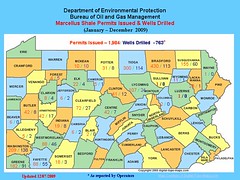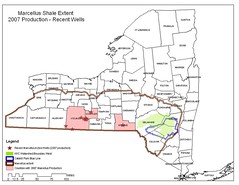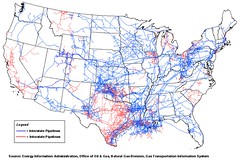Policy Expert at The Wilderness Society Testifies in Front of EPA Science Advisory Board
The Wilderness Society
PRESS RELEASE
April 7, 2010
WASHINGTON – Today, Mary Krueger, a policy expert at The Wilderness Society, testified at the Environmental Protection Agency (EPA)’s Science Advisory Board (SAB) Environmental Engineering Committee on the Hydraulic Fracturing Research Plan Review. The SAB is accepting public comments on the methodology of the EPA’s study on hydraulic fracturing that is scheduled to begin this year.
Krueger’s testimony makes clear that a study on the effects of hydraulic fracturing on drinking water must examine the risk that the invasive process poses to America’s water wells, especially in landforms that are already naturally fractured and porous. Additionally, the study must contain a full lifecycle of the hydraulic fracturing process, including an examination of the water supplies needed to carry out every “frack job.”
The testimony builds on The Wilderness Society’s work to ensure that natural gas drilling is “done right.” One of the most important components of “doing it right” is to make sure that drinking water is protected. Unfortunately, the natural gas industry currently enjoys an exemption from the Safe Drinking Water Act, which can be dangerous to both rural and urban communities. Even more worrisome is that natural gas companies are not required to publicly disclose the chemicals they are injecting underground. As Krueger states, “exempting hydraulic fracturing from the Safe Drinking Water Act creates a regulatory black hole that unnecessarily puts public safety in jeopardy.”
The Wilderness Society’s testimony focuses on three areas that the science committee leading the study must consider:
- The effects of hydraulic fracturing on karst water systems and landforms that are characterized by sinkholes, caves, seeps, and springs that supply drinking water;
- The water sources and quantities used for hydraulic fracturing — the process involves the usage of huge amounts of water, often four- seven million gallons or more per well; and
- Provisions that ensure that both the quantity and quality of drinking water from wells will not be negatively affected.
View Mary Krueger’s testimony.
View the power-point presentation.
“It is imperative that the Obama Administration ensure that natural gas development is done in a way that protects people and lands,” said Krueger. “The EPA should produce a study that is based on sound science and that is not compromised by the worn-out talking points used by the natural gas industry.”
Moving forward, The Wilderness Society urges the EPA to use sound science in decisions regarding hydraulic fracturing.
DEMAND ACCOUNTABILITY!



















Hi thankss for posting this
ReplyDelete